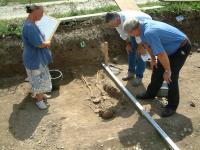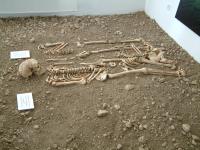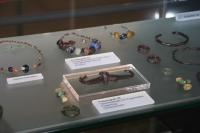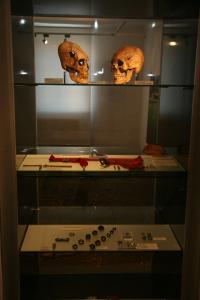
The cemetery from the times of Ostrogothic rule (493 - 536) with 422 graves was the first one excavated in the Alpine-Adriatic-Area. This revealed a half century of history from the times of migration of peoples. According to the Hun tradition, some of the Ostrogoths bandaged the heads of their babies in order to acquire a steeple-like form.

A selection of skeletons has been exhibited in the original soil. The visitors are provided with the explanation of the differences in structure between the female and male bones as well as the skull reshaping, diseases, injuries and burial customs. For example, people who died of violent death were buried lying on their stomach.

The display cabinet No. 1 shows the jewellery of women. Iron bracelets or rings helped them remedy an evil. Iron keys were given to women as an amulet for easier birth. A piece of a distaff and spindle indicated the wool-work which was considered to be a virtuous job.

The display cabinet No. 2 emphasizes the hinges of a red officer belt indicating the insignia of rank. Three rectangular belt hinges made of bronze and glass show eagle heads. The iron buckle with a fine piece of inland work made of silver and brass has a silver cross indicating that the commander of the control station was a Christian.


